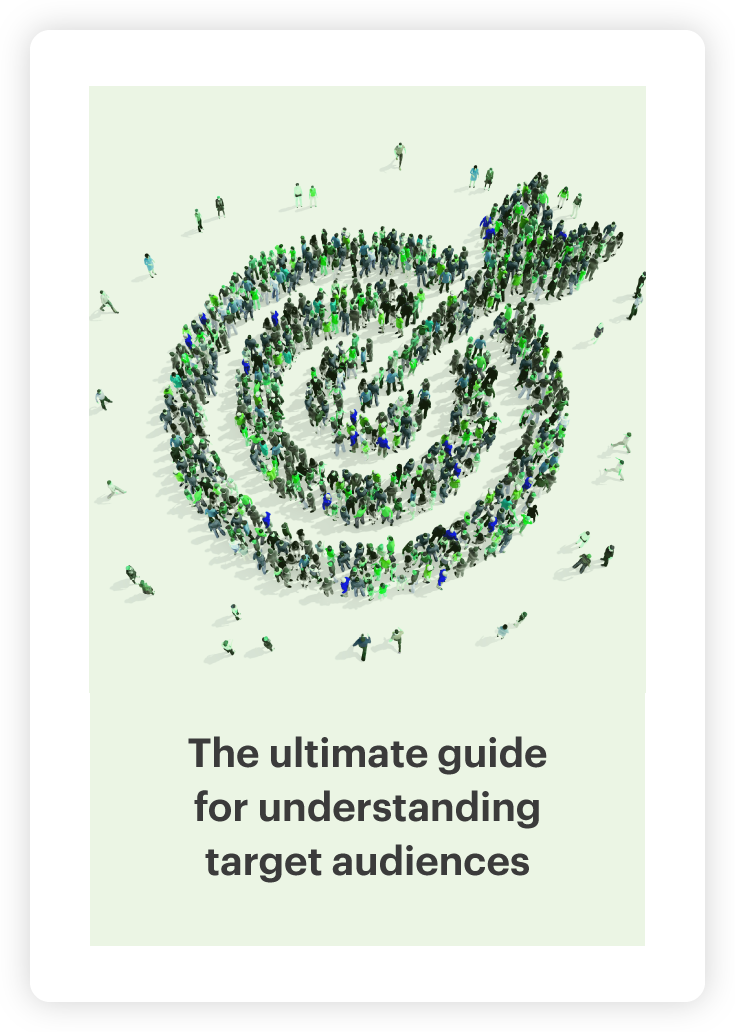How text analysis settled the debate between pizza and quiche

By Marcus Pemberton
Like a lot of people in this crisis, I’ve found myself frantically searching for escapism from the endless dystopian headlines and the boredom of being stuck in my tiny flat.
And this week, to the rescue came the spoof ‘Quiche Marketing Board’ Twitter account, having public spats with celebrities and well-known pizza brands, all in the name of “making the savoury open flan more popular than pizza”.
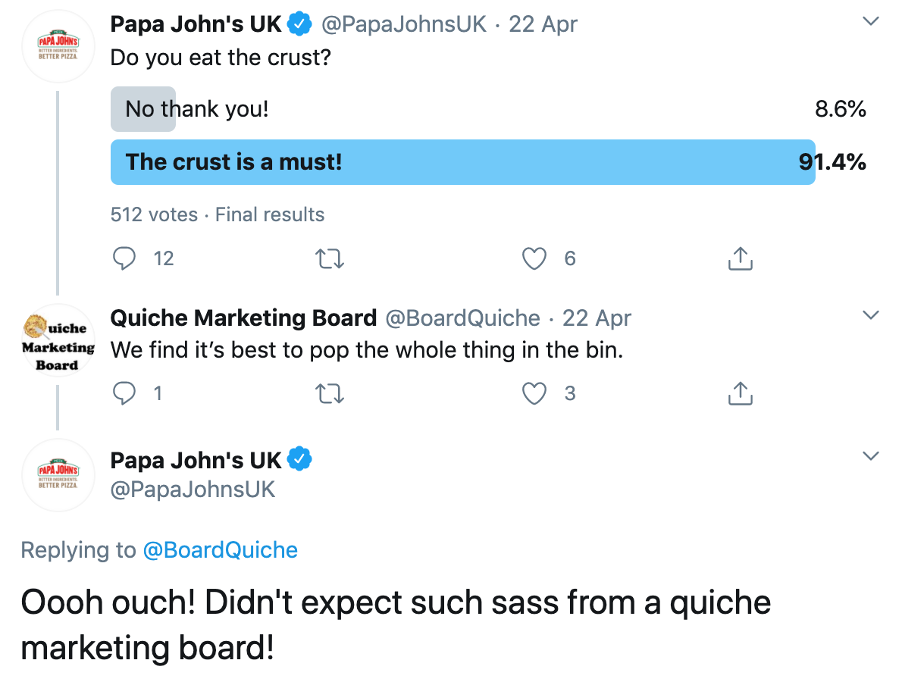
So when ‘The Board’ reached out to Twitter for help in their quest, the least I could do is give them a hand.

But where to even start with such a challenging brief? Fortunately, due to the high levels of online conversation around people’s lockdown cooking, baking and delivery habits, collecting audience conversations and analysing them in Relative Insight’s audience research platform allowed us to test the QMB’s hypothesis.
Firstly, I collected over 10,000 tweets from the last week that mentioned either pizza or quiche. I then cleaned the data, removing tweets from bots and corporate accounts to make sure that we’re only looking at consumer conversations. Finally, I uploaded these audience conversations into Relative Insight and created a comparison to reveal what people love and hate about pizza and quiche.
Tasty, tasty, very very tasty, it’s very tasty
Good news for The Quiche Marketing Board – consumers are 2.4x more likely to use superlative terms around tastiness (words like delicious, tasty or yummy) when they talk about quiche.
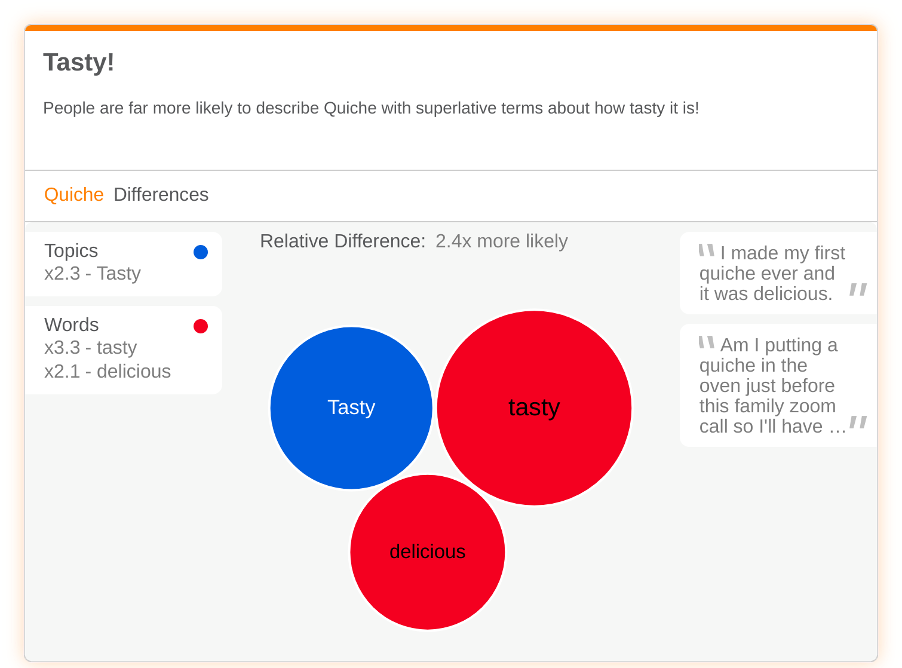
They are also likely to use terms like rustic and homely, and it also appears that quiche is also discussed as a great way to “use up” all that stockpiled eggs and flour.
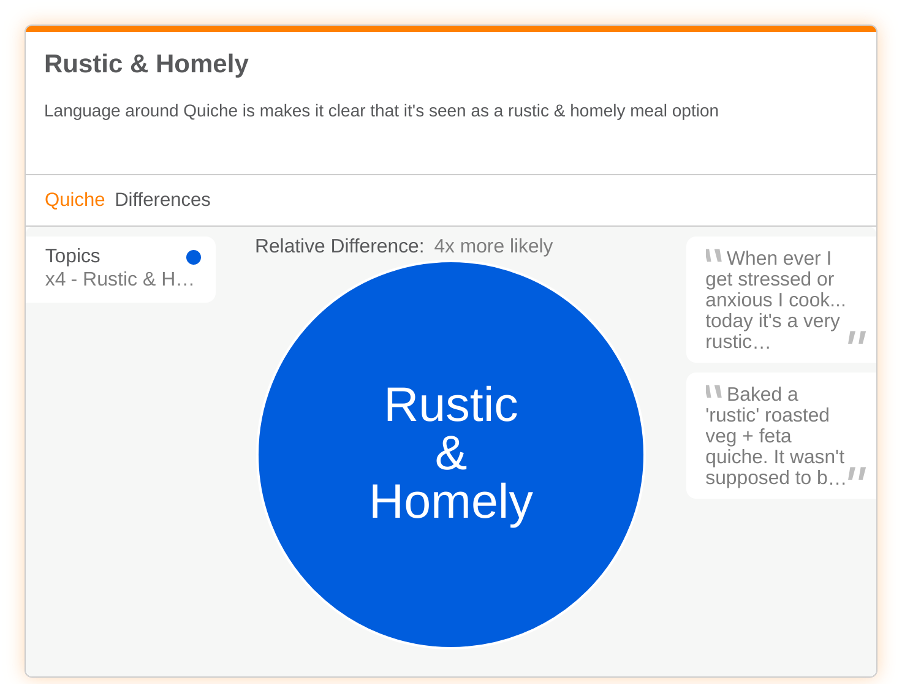
You’re going to be disappointed…
Conversely, when compared to quiche, the standout topic that came up when consumers are discussing pizza are complaints of poor quality. So it looks like consumers are far more likely to be disappointed by their pizza, than they are by a delicious, rustic, homemade quiche.

Using text analysis to uncover audience insights
While this example is simple and silly, it demonstrates how text analysis can unearth “unknown unknowns” in how different target audiences talks about a relevant subject.
If the Quiche Marketing Board were real, we’d be able to recommend that for their new marketing campaign they start to use some of the language that we’ve uncovered in our audience analysis. In order to appeal to their target audience, they should talk about their new range of quiches as rustic and homely – and that possibly there should be an activation showing consumers how to use up stockpiled ingredients in order to make their own quiches at home.
However, I’m resting easy because even in this spoof reality, my work here is done!
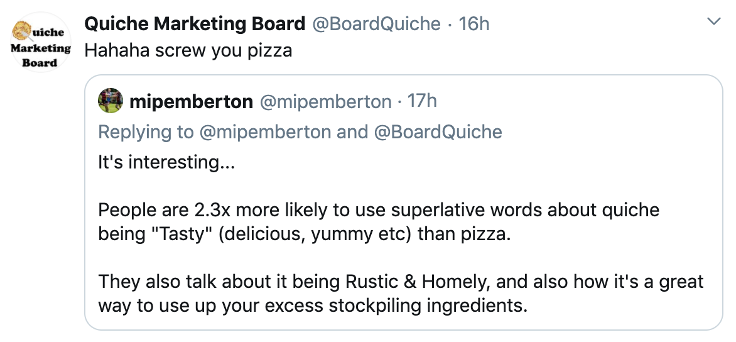
At Relative Insight, we help organisations analyse their social listening data and customer feedback – pizza-related or otherwise – to generate actionable business intelligence from words. Get in touch to learn more.

